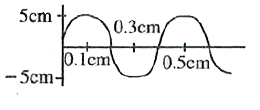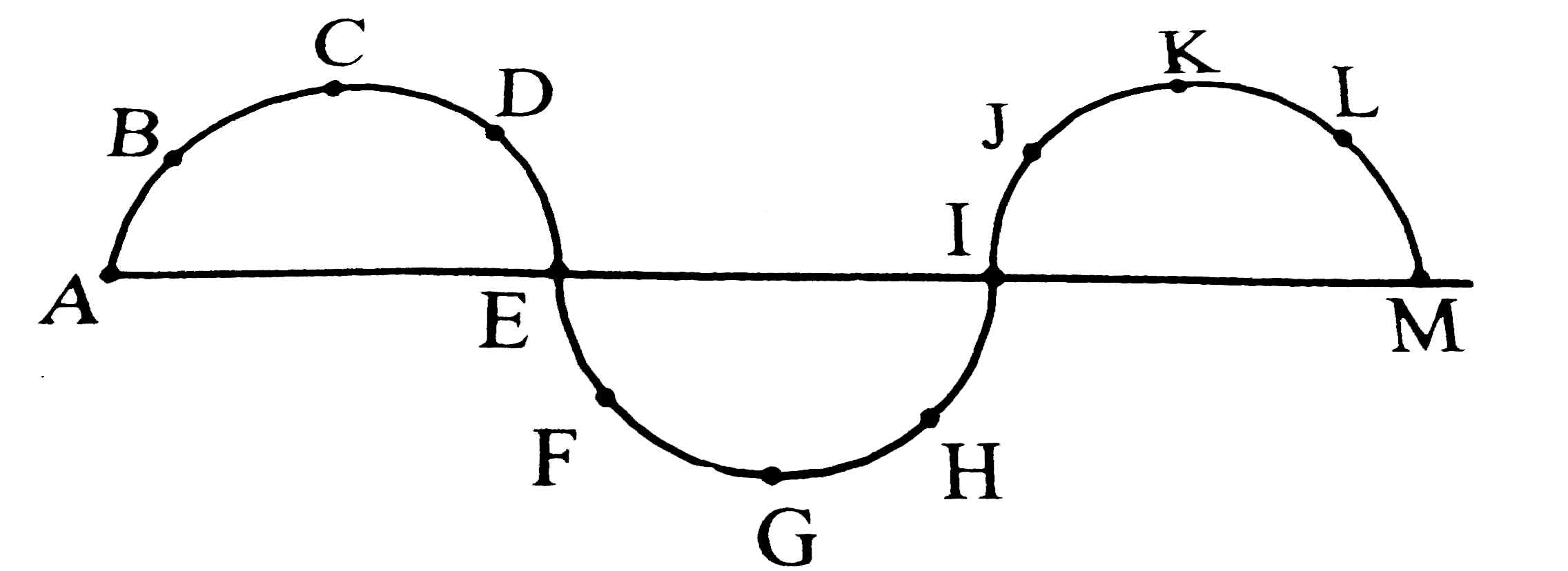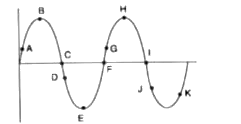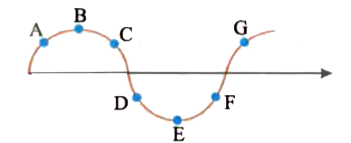Figure shows the shape of part of a long string in which transverse waves are produced by attaching one end of the string to tuning fork of frequency 250 Hz. What is the velocity of the waves?

1.0ms−1
1.5ms−1
2.0ms−1
2.5ms−1
The correct Answer is:A
Similar Questions

Figure given above shows the part of a long string in which transverse waves are produced. Which pair of points is in phase?
View SolutionThe string of violin emits a note of 440 Hz at its correct tension. The string is bit taut and produces 4 beats per second with a tuning fork of frequency 440 Hz. Find the frequency of the note emitted by this taut string.
View Solution
Knowledge Check
Figure 7.3 shows that the shape of a part of a long string in which transverse waves are produced. Which pair of particles are in phase?
 AA and GBD and GCB and EDC and K
AA and GBD and GCB and EDC and KA person vibrates the end of a string sending transverse waves down the string. If the person then doubles the frequency at which he vibrates the string, the speed of the waves
Adoubles and the wavelength doubledBdoubles while the wavelength is halvedCis unchanged while the wavelength is doubledDis unchanged while the wavelength is halved.The string of a violin emits a note of 205 Hz when its tension is correct. The string is made slightly more taut and it produces 6 beats in 2 seconds with a tuning fork of frequency 205 Hz. The frequency of the note emitted by the taut string is
A211 HzB199 HzC208 HzD202 Hz
Figure given shows a sinusoidal wave on a string. If the frequency of the wave is 150 Hz, what is the velocity and wavelength of the given wave?

View SolutionFigure given shows a sinusoidal wave on a string. If the frequency of the wave is 150 Hz, what is the velocity and wavelength of the given wave?

View SolutionIn Melde’s experiment in the transverse mode, the frequency of the tuning fork and the frequency of the waves in the strings are in the ratio
View SolutionA stretched string resonates with a tuning fork of frequency 500 Hz, when the length of the string is 0.75 m. If a tuning fork of frquency 250 Hz is used, then the new resonating length will be
View SolutionTransverse waves are produced in a long string by attaching its free end to a vibrating tuning fork. Figure shows the shape of a part of the string . The points in phase are

View Solution
